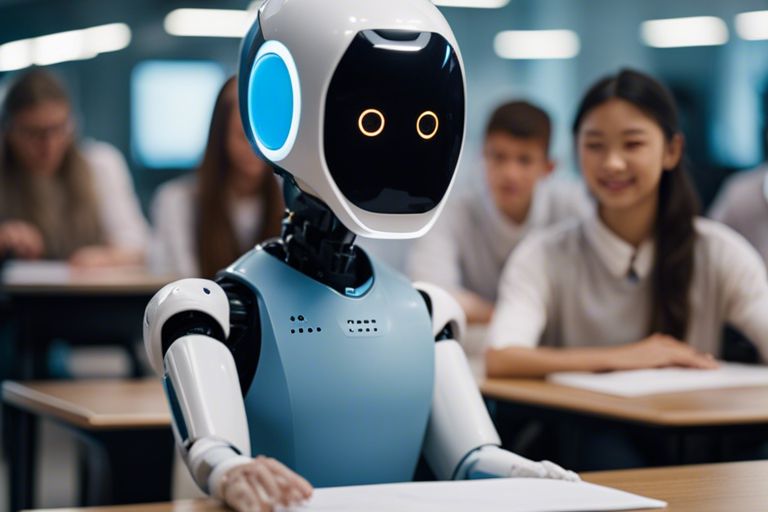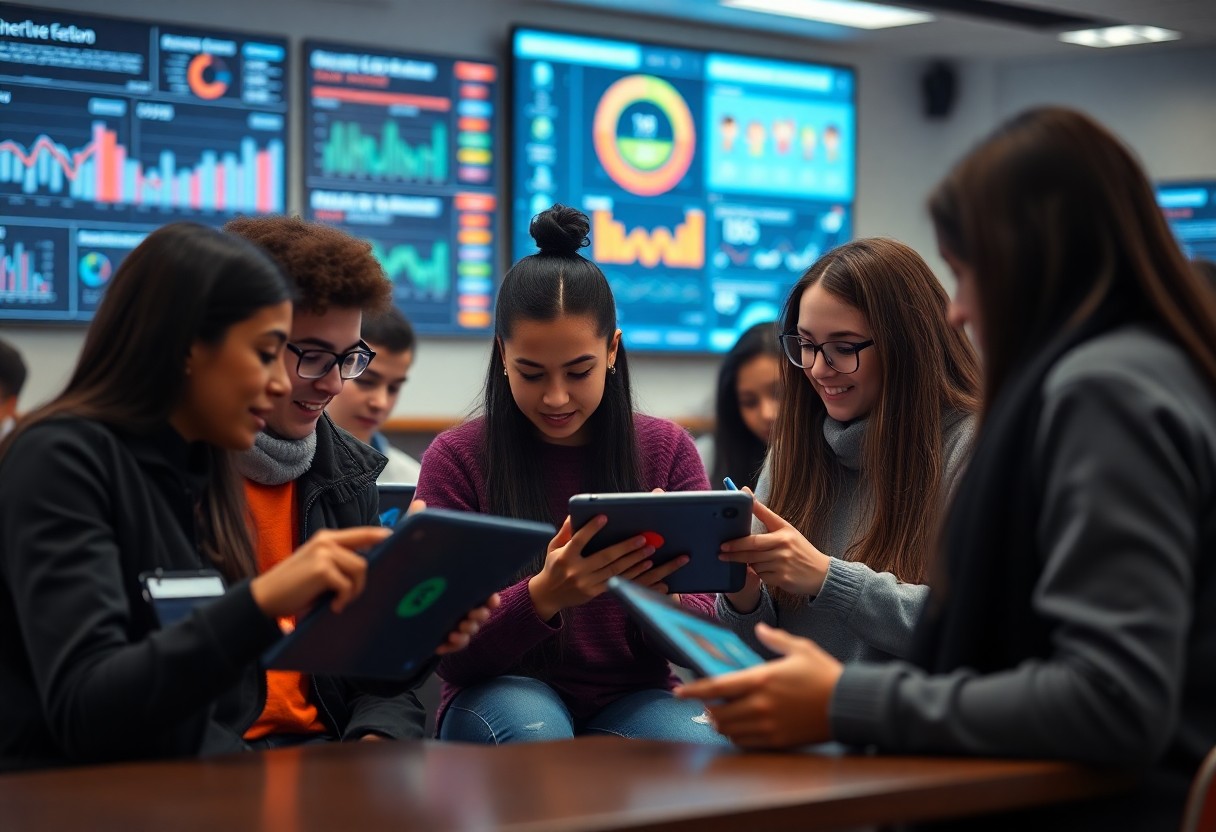Just imagine the transformative impact of incorporating artificial intelligence into your teaching practices. As an educator, you have the opportunity to leverage AI to create more personalized learning experiences, streamline assessment processes, and enhance student engagement. This blog post will explore the myriad ways AI can elevate your pedagogical approach, the tools available at your disposal, and the best practices for integrating technology into your classroom. Discover how to not only keep pace with an ever-evolving educational landscape but to thrive within it, ultimately benefiting both you and your students.
Key Takeaways:
- Personalization: AI can facilitate tailored learning experiences, adapting to individual student needs and enhancing engagement through customized content.
- Efficiency: Automation of administrative tasks allows educators to focus more on teaching, utilizing AI to streamline grading and feedback processes.
- Data-Driven Insights: AI tools can analyze student performance data, providing educators with valuable insights to inform instructional strategies and improve outcomes.

Understanding AI in Education
Before exploring how educators can leverage the capabilities of AI, it is crucial to grasp what AI entails in the educational context. Understanding AI involves recognizing its potential to enhance learning experiences, personalize instruction, and streamline administrative tasks. AI technologies are rapidly evolving, offering innovative tools that can transform the way students learn and teachers instruct.
Definition and Scope of AI
Education relies on the integration of Artificial Intelligence (AI) to foster improved learning outcomes. AI encompasses a range of technologies, including machine learning, natural language processing, and data analytics. In education, these technologies enable personalized learning environments, adaptive assessments, and data-driven decision-making, ultimately enhancing the overall educational experience.
Current Trends in AI Utilization
With continuous advancements in technology, AI is becoming increasingly prevalent in educational settings. You may notice trends such as the use of AI-driven tutoring systems, automated grading, and personalized learning platforms that adapt to individual student’s needs. Moreover, institutions are exploring AI for administrative efficiencies, enhancing educational accessibility, and facilitating remote learning experiences.
Understanding these current trends in AI utilization helps you recognize the profound impact AI can have on pedagogy. For instance, AI-based tools like chatbots can provide immediate responses to student queries, while machine learning algorithms can analyze student data to customize learning paths. This proactive approach allows educators to identify and address learning gaps early on, ultimately promoting student success. Embracing these technologies equips you with the resources necessary to navigate the evolving educational landscape effectively.
Enhancing Teaching Methods with AI
Even in traditional classrooms, AI technologies are revolutionizing the way you deliver lessons and engage with students. By leveraging intelligent algorithms and data analytics, you can refine your teaching strategies to create more effective and adaptive learning environments. These advancements not only facilitate new pedagogical approaches but also empower you to better understand your students’ needs, ultimately fostering a richer educational experience.
Personalization of Learning Experiences
To create more meaningful educational outcomes, AI allows you to personalize learning experiences for each student. By assessing individual progress and preferences, AI-driven tools can recommend tailored resources and activities, ensuring that every learner can engage with the material at their own pace. This customization fosters deeper understanding and keeps students motivated throughout their educational journey.
Automation of Administrative Tasks
Administrative tasks can often consume a significant portion of your time, detracting from actual teaching. AI can streamline these processes, automating tasks such as grading assignments and managing schedules. By reducing your administrative workload, you gain more time for engaging directly with students and refining your instructional methods.
For instance, AI can assist you in grading multiple-choice tests instantly, provide insights on student performance analytics, and automate communication with parents. This not only improves efficiency but also enhances accuracy in assessing student progress. With AI handling routine tasks, you can focus on more critical aspects of teaching, such as creating innovative lesson plans and fostering strong connections with your students.
AI as a Tool for Assessment
Not only does AI streamline the grading process, but it also reshapes how assessments are conducted and interpreted. By leveraging AI, educators can offer a more dynamic and responsive approach to evaluating student performance, ensuring that assessments reflect not just knowledge retention but also overall understanding and skill application.
Data-Driven Insights
To effectively enhance your teaching strategies, AI empowers you with data-driven insights that unveil individual student progress and overall class performance. By analyzing vast amounts of data, AI systems can highlight trends, pinpoint areas needing improvement, and allow you to tailor your instructional methods to meet diverse learning needs.
Real-Time Feedback Mechanisms
Mechanisms powered by AI enable you to provide instant feedback, crucial for student engagement and learning enhancement. This immediate responsiveness allows you to identify areas where students struggle, fostering an adaptive learning environment that can significantly improve educational outcomes.
Tool-driven real-time feedback mechanisms can transform the learning experience by providing students with immediate responses to their work. This instant feedback helps reinforce learning concepts and encourages ongoing engagement, as students can quickly understand their mistakes and correct them. By using AI tools, you can create a more individualized assessment process, allowing students to take ownership of their learning and develop a deeper understanding of the subject matter.
Challenges in Implementing AI in Pedagogy
For educators eager to integrate AI into their teaching strategies, numerous challenges must be navigated. These include ethical dilemmas surrounding data privacy, the potential for bias in AI algorithms, and the lack of resources or support for training. An understanding of these challenges is vital for you to effectively harness AI’s capabilities within your educational framework.
Ethical Considerations
Challenges arise when addressing the ethical implications of using AI in education. You must consider the privacy of student data, ensuring that it is protected from misuse. Additionally, the potential for algorithms to introduce bias further complicates the ethical landscape. As an educator, it is crucial to approach AI with a conscious awareness of its moral ramifications in the classroom.
Technological Barriers
For you, technological barriers can significantly hinder the effective implementation of AI in pedagogy. Limited access to necessary infrastructure, such as high-speed internet and advanced software, can derail your initiatives. Moreover, a lack of training for educators on how to use AI tools can impede their ability to integrate these technologies into their teaching.
Barriers to technology adoption in education often stem from inadequate funding or insufficient investment in training programs. These limitations can create a divide between schools with access to advanced AI tools and those without. For you to overcome these barriers, advocating for necessary resources and professional development opportunities is vital, ensuring that all educators are equipped to leverage AI for enhanced learning outcomes.
Professional Development for Educators
Keep in mind that professional development is crucial in leveraging AI for teaching. As an educator, you need to continually update your skills and knowledge to effectively incorporate AI technologies into your pedagogical practices. Engaging in targeted training and utilizing various resources can enrich your understanding of AI tools and their applications in the classroom, ultimately enhancing student learning outcomes.
Training and Resources
Any effective professional development program should include comprehensive training on AI technologies and access to a wealth of resources. This may involve workshops, online courses, and collaborative networks that equip you with the necessary skills to integrate AI into your teaching. Investing in these avenues will enable you to stay informed about the latest advancements and best practices in AI education.
Building a Collaborative Environment
Educators have the opportunity to create a collaborative environment that fosters innovation and the sharing of AI best practices. By working together, you can exchange insights and experiences, which enhances your understanding and effective use of AI tools in your teaching methodologies.
Development of a collaborative environment not only enriches your professional growth but also strengthens the entire educational community. You can establish peer groups, participate in professional learning communities, and engage in collaborative projects that emphasize the use of AI. This shared approach allows you to learn from each other’s successes and challenges, creating a dynamic platform for continuous improvement. By fostering open communication and trust, you contribute to a culture of innovation that maximizes the potential of AI in education.
Future Prospects of AI in Education
Once again, the landscape of education is poised for transformation through artificial intelligence. As educational institutions increasingly embrace AI technologies, you can expect enhanced personalization, streamlined administrative processes, and improved student engagement. With ongoing advancements, AI’s potential to support both teaching and learning will only deepen, shaping a future where education is more accessible and effective than ever before.
Innovations on the Horizon
With the rapid pace of technological advancement, innovative AI applications are set to redefine educational methodologies. You may soon encounter AI-driven tools that adapt to individual learning preferences, providing real-time feedback and resources tailored just for you. As these technologies evolve, they hold the promise of further enriching your educational experience, fostering more collaborative and interactive learning environments.
The Role of Educators in AI Integration
To effectively incorporate AI into educational frameworks, you must recognize your role as a facilitator and guide. Rather than replacing traditional teaching methods, AI tools should enhance your instructional strategies, allowing you to focus on fostering critical thinking and creativity in your students.
Integration of AI in education requires you to embrace new technologies while maintaining pedagogical integrity. As an educator, you should evaluate the relevance and effectiveness of AI tools, ensuring they align with your teaching goals. Collaboration with tech developers is important, as you can provide insights into the unique needs of your students. By actively engaging with AI, you not only enhance your teaching practice but also empower your students to harness technology for their learning journeys.
To wrap up
To wrap up, as you consider the role of AI in your educational practices, remember that harnessing its potential can significantly enhance your pedagogy. By integrating AI tools, you can personalize learning experiences, streamline administrative tasks, and support diverse learning styles, ultimately fostering a more engaging and effective classroom environment. Embrace these advancements thoughtfully, keeping in mind the importance of human connection and oversight, to ensure that AI serves as a valuable ally in your educational journey.
FAQ
Q: How can AI be effectively integrated into the classroom to enhance teaching methodologies?
A: AI can be integrated into the classroom through various technologies that support personalized learning experiences. Educators can use AI-driven platforms that analyze student performance in real time, providing tailored content that fits each student’s learning pace and style. This allows instructors to identify which students may need more support, enabling them to refine their teaching strategies accordingly. Additionally, AI tools can automate administrative tasks such as grading and attendance, freeing up time for educators to focus on interactive teaching methods and student engagement.
Q: What are the potential challenges educators might face when implementing AI in their pedagogy?
A: While AI offers numerous benefits, there are significant challenges that educators may encounter. One major concern is the digital divide; not all students have equal access to technology, which can lead to disparities in learning outcomes. Furthermore, educators may face resistance to change from both students and fellow staff who are accustomed to traditional methods. There can also be concerns regarding data privacy and security, as AI systems often require access to personal information. Comprehensive training for teachers and transparent communication about AI’s role in education are crucial to overcoming these obstacles.
Q: How does AI promote inclusivity and diversity in pedagogy?
A: AI has the potential to promote inclusivity and diversity in pedagogy by providing resources that cater to a wide range of learning needs. Adaptive learning technologies utilize AI algorithms to understand individual student requirements, allowing for the creation of customized learning paths that address varied backgrounds, abilities, and interests. Additionally, AI tools can assist in ensuring diverse perspectives are included in educational content, thereby fostering a richer learning environment. By enabling differentiated instruction, AI can help bridge gaps between students of different educational backgrounds and facilitate inclusive classrooms.




